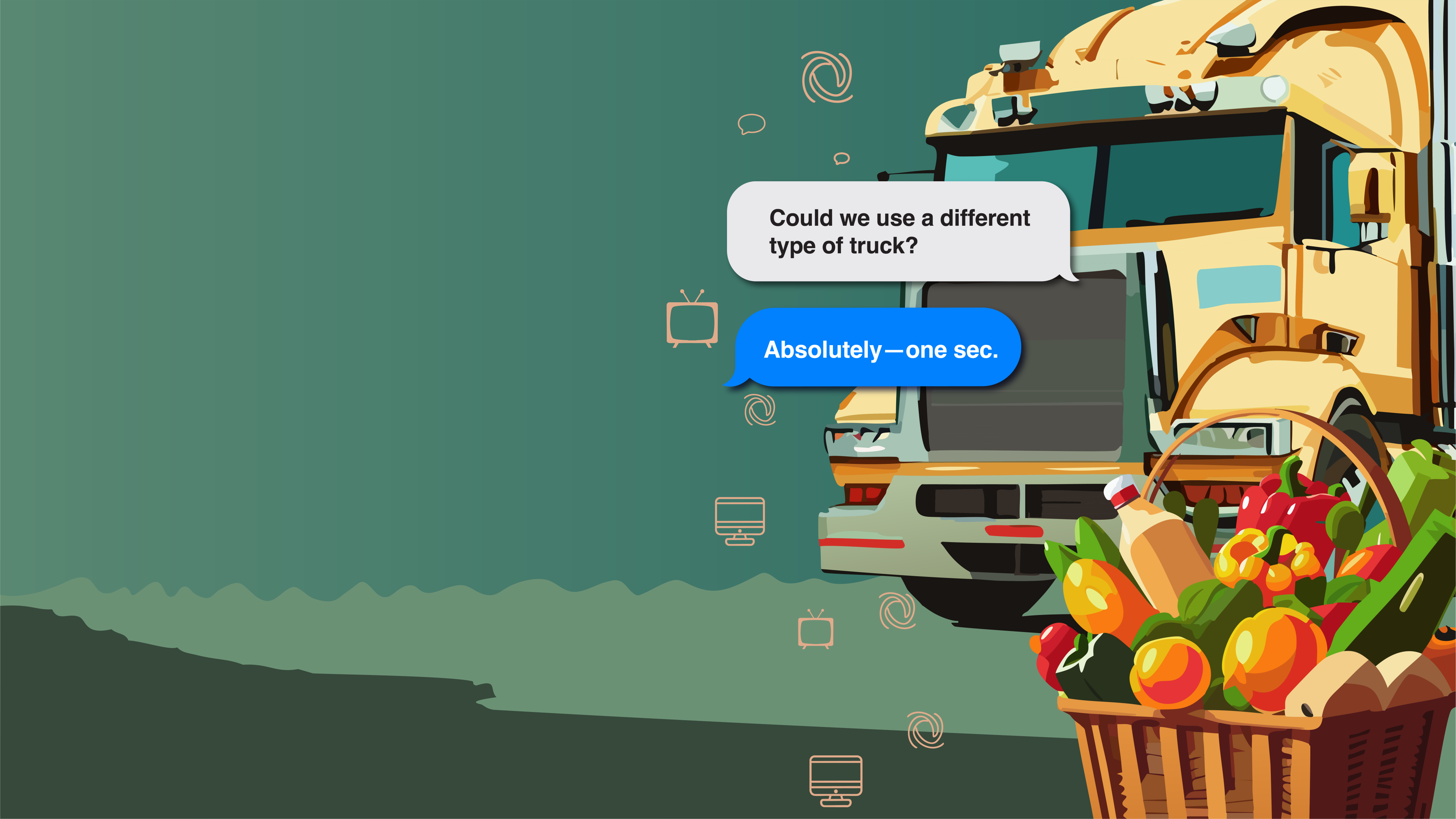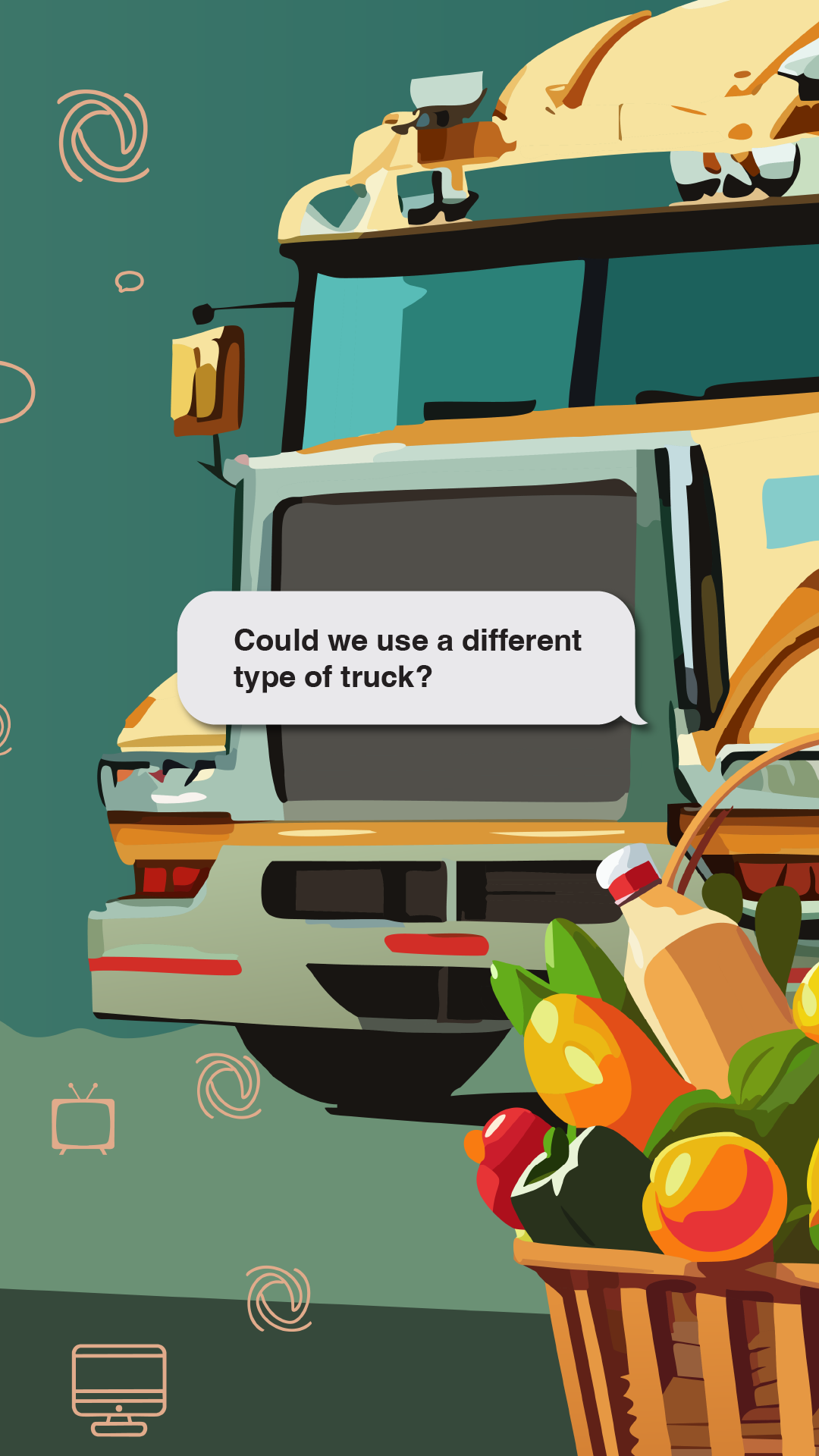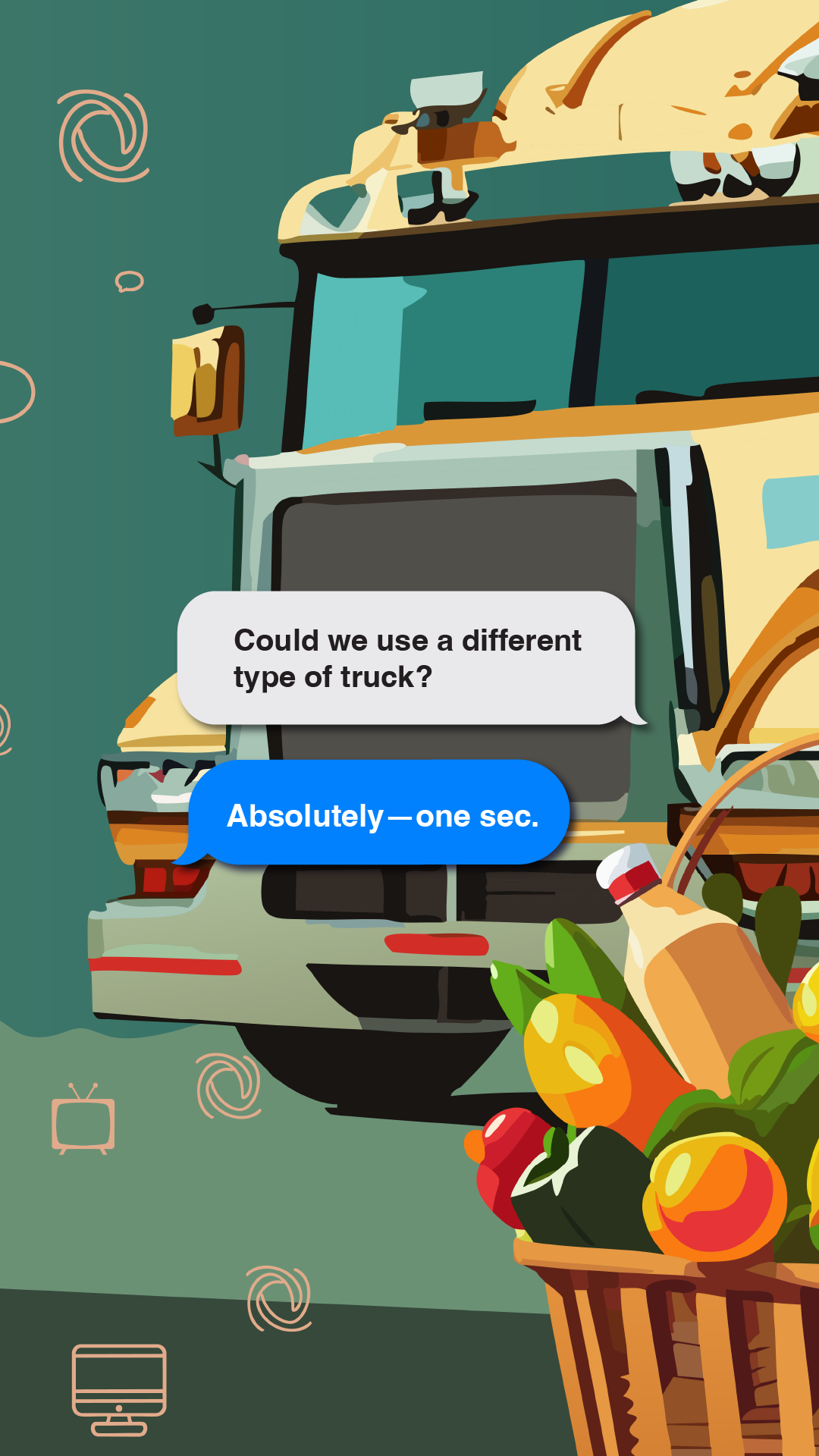
THE PROMISE OF ARTIFICIAL INTELLIGENCE
// By Marla Holt
THE PROMISE OF ARTIFICIAL INTELLIGENCE
// By Marla Holt

AI HAS THE POTENTIAL TO TRANSFORM OUR LIVES IN WAYS KNOWN AND UNKNOWN.
PURDUE UNIVERSITY, WITH ITS AI-FOCUSED PROGRAMS AND RESEARCH INITIATIVES, IS A KEY PLAYER IN GUIDING THE ADVANCEMENT OF THIS EVOLVING TECHNOLOGY.

AI HAS THE POTENTIAL TO TRANSFORM OUR LIVES IN WAYS KNOWN AND UNKNOWN.
PURDUE UNIVERSITY, WITH ITS AI-FOCUSED PROGRAMS AND RESEARCH INITIATIVES, IS A KEY PLAYER IN GUIDING THE ADVANCEMENT OF THIS EVOLVING TECHNOLOGY.


We already use artificial intelligence (AI) every daY.
We employ digital voice assistants, online text editors, and Google Maps and rely on smart appliances and other home devices.
Social media, online retail, and streaming services use algorithms to track our activity and improve our experience. These developments are arguably such a part of our routines that it’s sometimes hard to recall life without them.
That being said, artificial intelligence—which is, simply put, the simulation of human intelligence in machines, intertwining data science and high-performance computing—has the power for transformation far beyond lifestyle improvements by revolutionizing sectors including health care, education, transportation, and the environment.
AI research and development is receiving significant investment amid discussions about its economic impact and job market disruption—as well as ethical and societal concerns about how it is used.
Purdue is taking a seat at the table, contributing its faculty expertise and AI research knowledge to the conversation.
As part of its Purdue Computes initiative, the university launched the nation’s first Institute for Physical Artificial Intelligence (IPAI) in the spring of 2023, leveraging its signature strengths in materials science, engineering, microelectronics, computer science, agriculture, and life sciences to address some of the world’s most complex challenges.
In addition to a BS degree in artificial intelligence, Purdue now offers a BA in AI through the Department of Philosophy that examines AI’s moral and ethical implications.
“Our faculty are leaders at the intersection of the virtual and the physical, where the bytes of AI meet the atoms of what we grow, make, and move—from agriculture tech to personalized health care.”
In his May 2023 commencement address, President Chiang challenged the graduates to lead in “sharpening the ability to doubt, debate, and dissent” in a world dominated by artificial intelligence.
He called on the university to “present the vista of intellectual conflicts and the toil of critical thinking” to ensure that AI, while shaping humanity’s future across all industries, preserves individual freedoms and rights.









We already use artificial intelligence (AI) every daY.
We employ digital voice assistants, online text editors, and Google Maps and rely on smart appliances and other home devices.
Social media, online retail, and streaming services use algorithms to track our activity and improve our experience. These developments are arguably such a part of our routines that it’s sometimes hard to recall life without them.
That being said, artificial intelligence—which is, simply put, the simulation of human intelligence in machines, intertwining data science and high-performance computing—has the power for transformation far beyond lifestyle improvements by revolutionizing sectors including health care, education, transportation, and the environment.
AI research and development is receiving significant investment amid discussions about its economic impact and job market disruption—as well as ethical and societal concerns about how it is used.
Purdue is taking a seat at the table, contributing its faculty expertise and AI research knowledge to the conversation.
As part of its Purdue Computes initiative, the university launched the nation’s first Institute for Physical Artificial Intelligence (IPAI) in the spring of 2023, leveraging its signature strengths in materials science, engineering, microelectronics, computer science, agriculture, and life sciences to address some of the world’s most complex challenges.
In addition to a BS degree in artificial intelligence, Purdue now offers a BA in AI through the Department of Philosophy that examines AI’s moral and ethical implications.
“Our faculty are leaders at the intersection of the virtual and the physical, where the bytes of AI meet the atoms of what we grow, make, and move—from agriculture tech to personalized health care.”
In his May 2023 commencement address, President Chiang challenged the graduates to lead in “sharpening the ability to doubt, debate, and dissent” in a world dominated by artificial intelligence.
He called on the university to “present the vista of intellectual conflicts and the toil of critical thinking” to ensure that AI, while shaping humanity’s future across all industries, preserves individual freedoms and rights.


Using Physical AI Systems for the Common Good
Over the next five years, Purdue will add 50 faculty members to pursue cutting-edge AI research, joining those who are already proven leaders in the research areas of agricultural data, neuromorphic computing, deep-fake detection, smart transportation data, and AI-based manufacturing.
Harnessing AI’s power to transform our lives for good is the goal for many engaged in AI innovation at Purdue.
Assistant Professor of Computer Science Alex Psomas, who conducts research at the intersection of economics and computer science, has partnered with the Indy Hunger Network (IHN) to automate its Food Drop program, which matches truck drivers who need to offload edible but unsalable food with nearby food banks as an alternative to dumping the food in a landfill, which creates enormous waste.
IHN had manually matched truck drivers with donation centers, consuming a considerable amount of staff members’ time that could be spent on other tasks benefiting IHN’s mission to eradicate hunger.
Psomas and his team automated the process by leveraging advanced algorithms and data analysis to connect drivers and food banks more efficiently online—and increase the number of sites to which the food is donated.
“We’re hopeful that through automation we can increase the number of successful matches, thereby slashing food waste and reducing food insecurity,” says Psomas, who noted that the process has the potential to be used beyond Indiana.
Another example of Purdue’s leadership in the AI realm is its inclusion in the new $20 million AI Institute for Climate-Land Interactions, Mitigation, Adaptation, Tradeoffs, and Economy (AI-CLIMATE), a multiuniversity collaboration funded by the National Science Foundation and the U.S. Department of Agriculture.
As part of AI-CLIMATE, Purdue received a five-year $500,000 grant toward education and workforce development to facilitate knowledge transfer and the adoption of environmentally favorable practices, says Bruce Erickson (PhD A’00), clinical professor of digital agriculture in the Department of Agronomy.
Purdue, which already emphasizes data science in its ag courses, will guide the institute’s development and deployment of instructional modules related to digital agriculture and artificial intelligence in climate-smart agriculture.
“We’ll be developing tools and education around ways that farmers, ranchers, and foresters can use AI to slow climate change, whether that’s through conservation tillage, reduced and/or site-specific use of pesticides and fertilizers, and carbon sequestration.”
Erickson notes in particular Purdue’s ability to reach farmers and their advisors—the critical adopters of new technologies—through its Agronomy e-Learning Academy, which delivers online courses to hundreds of ag professionals every year.
Current AI systems like digital voice assistants only respond to language as a set of characters or phrases, not the tone in which words are spoken or the body language of the speaker, so Associate Professor of Computer Science Aniket Bera’s interdisciplinary lab works at the intersection of machine learning and human emotion and behavior to build emotionally and behaviorally intelligent AI systems.
“There are a million variables that capture this latent and behavioral emotive space of humans, so we are working to build intelligent robots that can recognize, predict, and respond to some of those nonverbal cues.”
It’s challenging and complex work, Bera says, that requires taking a multisensory approach—rather than an object- or ground-truth based approach—to training machines in observing and analyzing such things as facial expressions, body movements and gestures, and differing linguistic and cultural parameters.
“This makes our work infinitely more difficult,” Bera says. “But if we want to build AI systems to help us, it’s essential that they go beyond just recognizing words to understanding context.”
Such systems that improve collaboration between robots and humans could positively impact our lives across all sectors.
“When robots can predict behavior and intent, they become better collaborators with humans,” Bera says. “The idea is to use them in partnership to accomplish our goals more efficiently and effectively.”









Using Physical AI Systems for the Common Good
Over the next five years, Purdue will add 50 faculty members to pursue cutting-edge AI research, joining those who are already proven leaders in the research areas of agricultural data, neuromorphic computing, deep-fake detection, smart transportation data, and AI-based manufacturing.
Harnessing AI’s power to transform our lives for good is the goal for many engaged in AI innovation at Purdue.
Assistant Professor of Computer Science Alex Psomas, who conducts research at the intersection of economics and computer science, has partnered with the Indy Hunger Network (IHN) to automate its Food Drop program, which matches truck drivers who need to offload edible but unsalable food with nearby food banks as an alternative to dumping the food in a landfill, which creates enormous waste.
IHN had manually matched truck drivers with donation centers, consuming a considerable amount of staff members’ time that could be spent on other tasks benefiting IHN’s mission to eradicate hunger.
Psomas and his team automated the process by leveraging advanced algorithms and data analysis to connect drivers and food banks more efficiently online—and increase the number of sites to which the food is donated.
“We’re hopeful that through automation we can increase the number of successful matches, thereby slashing food waste and reducing food insecurity,” says Psomas, who noted that the process has the potential to be used beyond Indiana.
Another example of Purdue’s leadership in the AI realm is its inclusion in the new $20 million AI Institute for Climate-Land Interactions, Mitigation, Adaptation, Tradeoffs, and Economy (AI-CLIMATE), a multiuniversity collaboration funded by the National Science Foundation and the U.S. Department of Agriculture.
As part of AI-CLIMATE, Purdue received a five-year $500,000 grant toward education and workforce development to facilitate knowledge transfer and the adoption of environmentally favorable practices, says Bruce Erickson (PhD A’00), clinical professor of digital agriculture in the Department of Agronomy.
Purdue, which already emphasizes data science in its ag courses, will guide the institute’s development and deployment of instructional modules related to digital agriculture and artificial intelligence in climate-smart agriculture.
“We’ll be developing tools and education around ways that farmers, ranchers, and foresters can use AI to slow climate change, whether that’s through conservation tillage, reduced and/or site-specific use of pesticides and fertilizers, and carbon sequestration.”
Erickson notes in particular Purdue’s ability to reach farmers and their advisors—the critical adopters of new technologies—through its Agronomy e-Learning Academy, which delivers online courses to hundreds of ag professionals every year.
Current AI systems like digital voice assistants only respond to language as a set of characters or phrases, not the tone in which words are spoken or the body language of the speaker, so Associate Professor of Computer Science Aniket Bera’s interdisciplinary lab works at the intersection of machine learning and human emotion and behavior to build emotionally and behaviorally intelligent AI systems.
“There are a million variables that capture this latent and behavioral emotive space of humans, so we are working to build intelligent robots that can recognize, predict, and respond to some of those nonverbal cues.”
It’s challenging and complex work, Bera says, that requires taking a multisensory approach—rather than an object- or ground-truth based approach—to training machines in observing and analyzing such things as facial expressions, body movements and gestures, and differing linguistic and cultural parameters.
“This makes our work infinitely more difficult,” Bera says. “But if we want to build AI systems to help us, it’s essential that they go beyond just recognizing words to understanding context.”
Such systems that improve collaboration between robots and humans could positively impact our lives across all sectors.
“When robots can predict behavior and intent, they become better collaborators with humans,” Bera says. “The idea is to use them in partnership to accomplish our goals more efficiently and effectively.”


Generative AI’s Impact on Teaching and Learning
The advent of ChatGPT and other AI-powered large language models (LLMs), which are deep-learning algorithms that can—having learned the patterns and connections between words and phrases—recognize, summarize, translate, predict, and generate content, has been akin to the seismic shifts we experienced when other tools were first introduced, such as the internet and smartphones.
Those inventions initially bewildered and concerned us but ended up changing the way we do things.
So it will be with generative AI programs, which are opening up new pedagogical opportunities in higher education, says Professor of English Harry Denny, director of the Purdue OWL, the university’s on-campus and online writing lab.
“From a writing perspective, these tools allow us to think about how we sequence assignments, how we recognize authentic voices, how we give feedback, and how we introduce conversations around research. We are, after all, all about the process of learning, not just the final product.”
Giving immediate feedback on writing assignments is the goal of Purdue’s “Charlie,” an AI assistant—or bot—that guides students through drafting papers.
Trained on a large corpus of Purdue instructor–graded essays, Charlie provides feedback that can predict outcomes according to an assignment’s rubric criteria. Students can revise and resubmit papers as much as they’d like, getting assistance as needed.
Charlie was developed by Purdue’s Teaching and Learning Technologies group, which is now working on layering Charlie’s coding on top of ChatGPT’s bot to give students additional qualitative and quantitative feedback.
“These AI models provide feedback that looks like what a professor would give to prompt you to dig deeper—they don’t just give you an answer,” says Lindsay Hamm, assistant teaching professor of sociology and the first AI Innovation Fellow at Purdue’s Innovation Hub.
“I’ve found generative AI tools help students get past the blank-page problem by providing incentive to see their writing as a process,” she says, noting that students start earlier than they otherwise might, which leaves time to discuss with her how to use the AI tool’s feedback to improve their papers.
Faculty are understandably nervous about the potential AI presents for plagiarism, Denny says. “Exciting conversations are happening to reframe how we think about AI in relation to academic integrity, including discussions about how to cite an LLM as a source.”
Hamm, as a faculty facilitator in Purdue’s Teaching and Learning Community of Practice, agrees. “These LLMs are helpful tools that humans are using, and we are in a really good position to shape them to our benefit, not just passively accept them.”









Generative AI’s Impact on Teaching and Learning
The advent of ChatGPT and other AI-powered large language models (LLMs), which are deep-learning algorithms that can—having learned the patterns and connections between words and phrases—recognize, summarize, translate, predict, and generate content, has been akin to the seismic shifts we experienced when other tools were first introduced, such as the internet and smartphones.
Those inventions initially bewildered and concerned us but ended up changing the way we do things.
So it will be with generative AI programs, which are opening up new pedagogical opportunities in higher education, says Professor of English Harry Denny, director of the Purdue OWL, the university’s on-campus and online writing lab.
“From a writing perspective, these tools allow us to think about how we sequence assignments, how we recognize authentic voices, how we give feedback, and how we introduce conversations around research. We are, after all, all about the process of learning, not just the final product.”
Giving immediate feedback on writing assignments is the goal of Purdue’s “Charlie,” an AI assistant—or bot—that guides students through drafting papers.
Trained on a large corpus of Purdue instructor–graded essays, Charlie provides feedback that can predict outcomes according to an assignment’s rubric criteria. Students can revise and resubmit papers as much as they’d like, getting assistance as needed.
Charlie was developed by Purdue’s Teaching and Learning Technologies group, which is now working on layering Charlie’s coding on top of ChatGPT’s bot to give students additional qualitative and quantitative feedback.
“These AI models provide feedback that looks like what a professor would give to prompt you to dig deeper—they don’t just give you an answer,” says Lindsay Hamm, assistant teaching professor of sociology and the first AI Innovation Fellow at Purdue’s Innovation Hub.
“I’ve found generative AI tools help students get past the blank-page problem by providing incentive to see their writing as a process,” she says, noting that students start earlier than they otherwise might, which leaves time to discuss with her how to use the AI tool’s feedback to improve their papers.
Faculty are understandably nervous about the potential AI presents for plagiarism, Denny says. “Exciting conversations are happening to reframe how we think about AI in relation to academic integrity, including discussions about how to cite an LLM as a source.”
Hamm, as a faculty facilitator in Purdue’s Teaching and Learning Community of Practice, agrees. “These LLMs are helpful tools that humans are using, and we are in a really good position to shape them to our benefit, not just passively accept them.”


Ethics in the Digital Age
Through Purdue’s new BA in artificial intelligence, students now can explore the relationship between humans and AI, studying its ethical implications while preparing for careers in marketing these new technologies and managing their applications.
“There is a lot of concern about how artificial intelligence will affect society and how we can develop it to align with our moral, ethical, and sociological principles,” says Assistant Professor of Philosophy Javier Gomez-Lavin.
In order to consider the ethical aspects of AI, students must understand the fundamentals of machine learning, so the new major mixes philosophy courses with computer science courses that teach basic principles of computer and data science.
“We’re hoping the BA in AI develops the twin skills of technological foresight and ethical foresight,” Gomez-Lavin says.
Students have access to Purdue’s new Virtual Reality and Artificial Intelligence (VRAI) Lab; its state-of-the-art desktops, VR headsets, 3D printers, and object scanners are pedagogical resources for both faculty and student innovation, Gomez-Lavin says.
“We recognize virtual reality and gaming as an entrée into the principles of AI,” he says. “The lab is a hub for faculty who are developing courses that link philosophy with machine learning as well as a makerspace for student experimentation.”
Gomez-Lavin finds the surge in interest in AI to be an exciting opportunity for those in higher education to ask questions about its efficacy.
“Everybody’s hyped about it. What should we build? How should we deploy it? How can we train those who will figure out what the guardrails should be? How can we best prepare future stakeholders for the widespread adoption of these models?”
A recent Pew Research Center survey found that 52% of Americans surveyed were more concerned than excited about the increased use of artificial intelligence. Just 10% were more excited than concerned, while 36% felt an equal mix of these emotions.
“Broadly speaking, people tend to be very passive about technological changes because the changes are so much faster than we have the energy and time to absorb,” Psomas says. “We all need to be better about understanding machine learning—pulling back the curtain, so to speak, to learn how it works, recognize that it’s not magic, and to appreciate its potential.”
Hamm notes that Purdue is well-positioned to take a leading role in removing the uncertainty surrounding AI to welcome it as an exciting new frontier that can transform the way in which we live and learn.
“Purdue’s leadership is committed to welcoming dialogue about the power of AI. We are inviting collaboration among students, staff, and faculty in order to discover the best way forward.”









Ethics in the Digital Age
Through Purdue’s new BA in artificial intelligence, students now can explore the relationship between humans and AI, studying its ethical implications while preparing for careers in marketing these new technologies and managing their applications.
“There is a lot of concern about how artificial intelligence will affect society and how we can develop it to align with our moral, ethical, and sociological principles,” says Assistant Professor of Philosophy Javier Gomez-Lavin.
In order to consider the ethical aspects of AI, students must understand the fundamentals of machine learning, so the new major mixes philosophy courses with computer science courses that teach basic principles of computer and data science.
“We’re hoping the BA in AI develops the twin skills of technological foresight and ethical foresight,” Gomez-Lavin says.
Students have access to Purdue’s new Virtual Reality and Artificial Intelligence (VRAI) Lab; its state-of-the-art desktops, VR headsets, 3D printers, and object scanners are pedagogical resources for both faculty and student innovation, Gomez-Lavin says.
“We recognize virtual reality and gaming as an entrée into the principles of AI,” he says. “The lab is a hub for faculty who are developing courses that link philosophy with machine learning as well as a makerspace for student experimentation.”
Gomez-Lavin finds the surge in interest in AI to be an exciting opportunity for those in higher education to ask questions about its efficacy.
“Everybody’s hyped about it. What should we build? How should we deploy it? How can we train those who will figure out what the guardrails should be? How can we best prepare future stakeholders for the widespread adoption of these models?”
A recent Pew Research Center survey found that 52% of Americans surveyed were more concerned than excited about the increased use of artificial intelligence. Just 10% were more excited than concerned, while 36% felt an equal mix of these emotions.
“Broadly speaking, people tend to be very passive about technological changes because the changes are so much faster than we have the energy and time to absorb,” Psomas says. “We all need to be better about understanding machine learning—pulling back the curtain, so to speak, to learn how it works, recognize that it’s not magic, and to appreciate its potential.”
Hamm notes that Purdue is well-positioned to take a leading role in removing the uncertainty surrounding AI to welcome it as an exciting new frontier that can transform the way in which we live and learn.
“Purdue’s leadership is committed to welcoming dialogue about the power of AI. We are inviting collaboration among students, staff, and faculty in order to discover the best way forward.”


EVERYBODY’S HYPED ABOUT IT.
WHAT SHOULD WE BUILD?
EVERYBODY’S HYPED ABOUT IT. WHAT SHOULD WE BUILD?
Most of the art in this story was made using generative AI from Adobe Creative Cloud.

